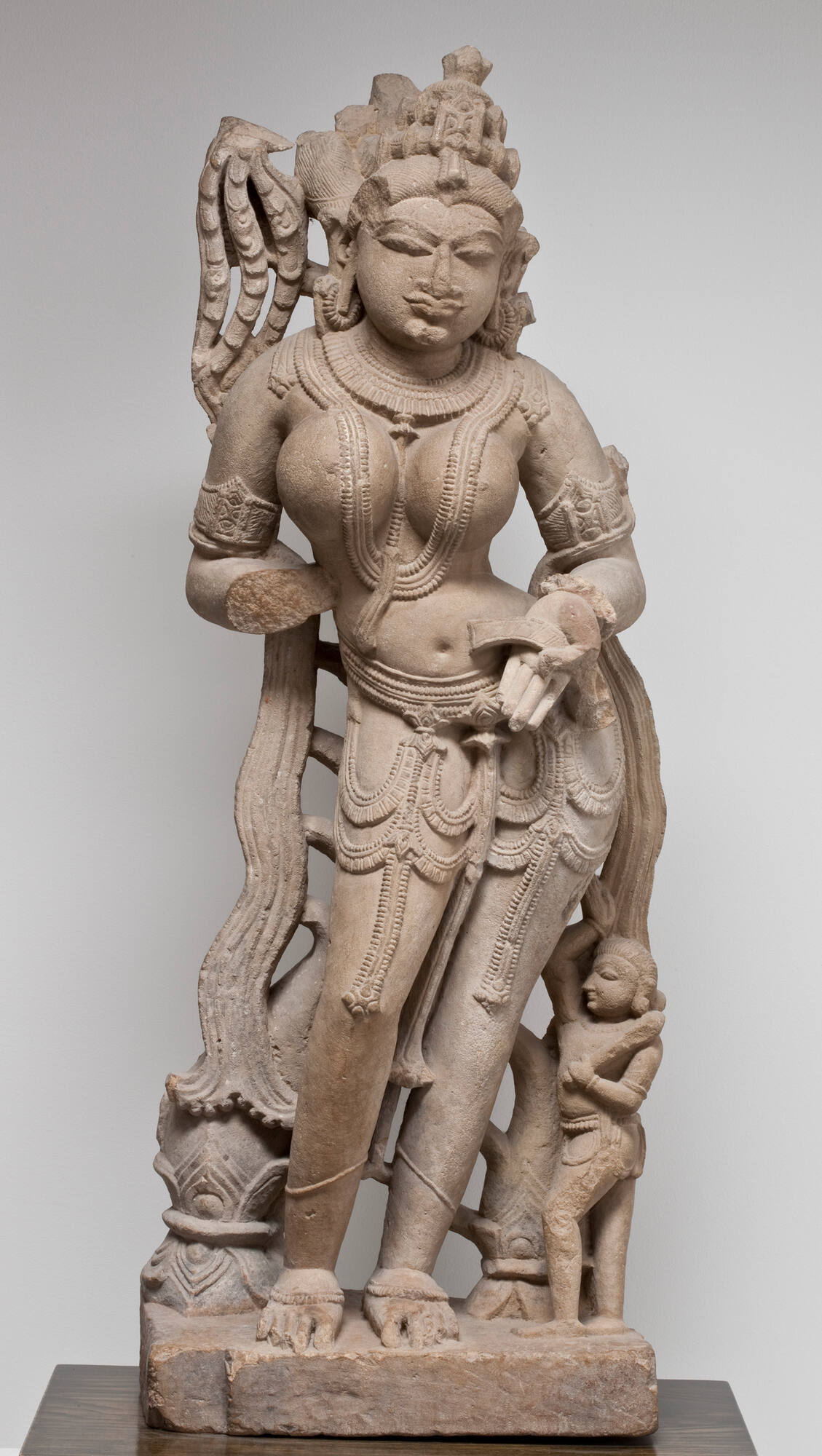
Object Details
Culture
India, probably Rajasthan
Date
ca. 11th–12th century
Medium
Buff sandstone
Dimensions
Height: 33 inches (83.8 cm)
Credit Line
Acquired through the Museum Associates Purchase Fund
Object
Number
67.037
While this figure with its extravagantly rounded volumes, elaborate jewelry, and exaggerated serpent(…)
While this figure with its extravagantly rounded volumes, elaborate jewelry, and exaggerated serpentine pose makes a powerful impression when encountered in the Museum, it was not a separate cult image, but a part of the very fabric of the temple. In its plan and elevation, the temple is both a symbolic diagram of the cosmos, and its actualization. The walls are thronged with the richly carved forms of all the teeming delight and variety of the universe. It is in this setting, warmed by the sun and shadowed by the projecting enframements, that this feminine goddess regains her full power. She blossoms from the vertical architectural wall surface to modulate and activate the surrounding space. Her function is to embody fruitfulness and delight. She is either a celestial maiden (Surasundari) or one of the Alasa-kanyas, the indolent maidens whose grace and beauty make a heavenly palace of the temple. This figure is carved in a style that was common in mid-India and Rajastan during the tenth and eleventh centuries. It is a sustained exploration in the power of roundness, with its entirely convex surfaces, and the deeply exaggerated, continuous recessions from the frontal planes to the rear plane. The precisely articulated units of jewelry and girdle also serve to emphasize the softness and fullness of the figure. (From “A Handbook of the Collection: Herbert F. Johnson Museum of Art,” 1998)












